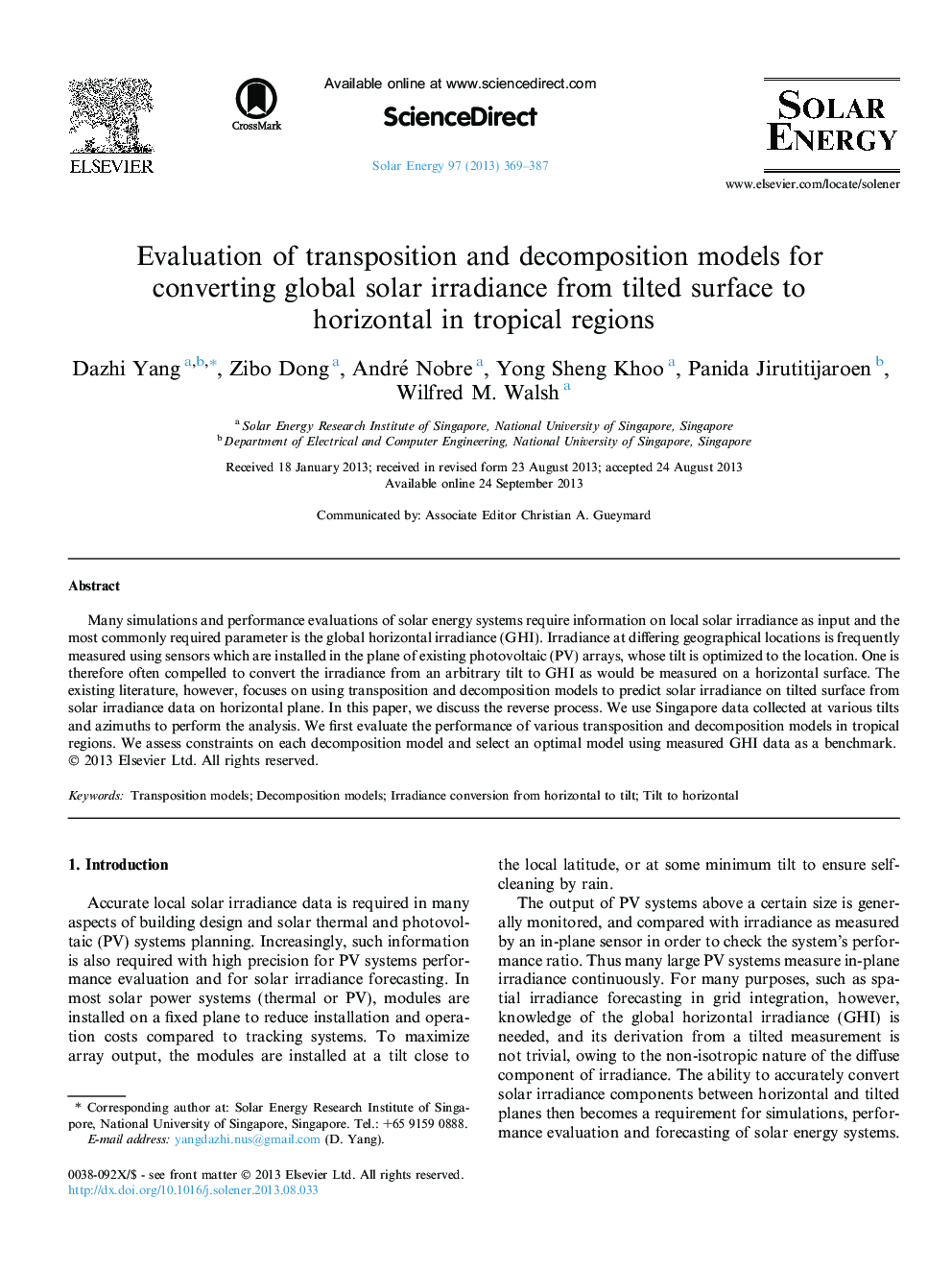| Article ID | Journal | Published Year | Pages | File Type |
|---|---|---|---|---|
| 1550360 | Solar Energy | 2013 | 19 Pages |
•We propose a model to convert global solar irradiance from tilted planes to horizontal.•Ten transposition models for conversion from horizontal to tilt are validated using tropical data.•Five decomposition models are validated for the tropics.•Decrease in zenith angle can improve the conversion accuracy.
Many simulations and performance evaluations of solar energy systems require information on local solar irradiance as input and the most commonly required parameter is the global horizontal irradiance (GHI). Irradiance at differing geographical locations is frequently measured using sensors which are installed in the plane of existing photovoltaic (PV) arrays, whose tilt is optimized to the location. One is therefore often compelled to convert the irradiance from an arbitrary tilt to GHI as would be measured on a horizontal surface. The existing literature, however, focuses on using transposition and decomposition models to predict solar irradiance on tilted surface from solar irradiance data on horizontal plane. In this paper, we discuss the reverse process. We use Singapore data collected at various tilts and azimuths to perform the analysis. We first evaluate the performance of various transposition and decomposition models in tropical regions. We assess constraints on each decomposition model and select an optimal model using measured GHI data as a benchmark.
